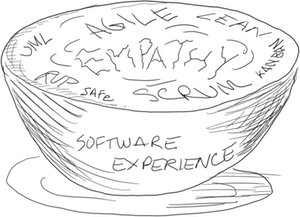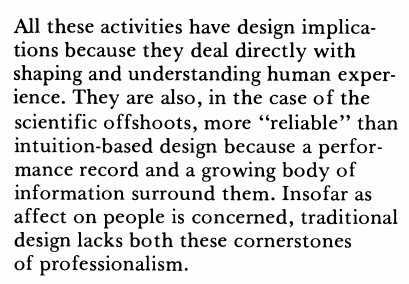By Cobbie Behrend | August 20, 2018
To understand why our values matter requires a brief look back to the soup from which our company was formed. The spice for that soup is a mix of 18 years of engagement in the agile software community, as a developer, consultant, and leader. All of that experience was suspended with a lot of empathy, which pushed me to learn, do more, help others, and talk to users—when permitted.

However, I have come to realize that failing earlier, empathy, and talking to people is not enough. There exists a rich history of people focused services, tools, and frameworks outside the purview of my engineering role.
The guidance to focus on people when developing software for people is not new. In February of 2001 the Agile Manifesto included principles that stressed individuals, collaboration, and personal interaction. One of its twelve principles states:
The most efficient and effective method of
conveying information to and within a development
team is face-to-face conversation.
However, further guidance regarding interactions, collaborations, and conversations is left up to the reader. In 2014 a group of top technologists collaborated to create the Digital Services Playbook. More than a manifesto, the playbook’s checklist offers greater insight into the types of interactions available to software builders.

Who conducts this qualitative and quantitative research they speak of? Marketing? Sales? Product?
When we look to the field of Design we find a clear answer: scientists! The earliest example I can find is Victor Papanek, who wrote about his efforts to utilize cross-disciplinary teams in Design for the Real World, first printed in 1971. Victor tells us that although problem solving is the designer’s primary objective, design must be supported through insights that come from other fields such as anthropology, social sciences, and behavioral sciences (p 160).
As a software developer, this was news to me. Business Analysts, Users, and Stakeholders are where requirements came from, not scientists. Why is science required? In the introduction to a 1975 issue of Design Quarterly, Neils Diffrient proposed the influence of the same disciplines.

Neils goes on to explain why these activities are so significant—why science matters.

Design benefits from a rich and long history of creative problem solving processes. Many “real world” product designers understand how evidence gathered from scientific disciplines can support problem definition and innovation discovery. And yet, spending time with users using a range of qualitative and quantitative research methods steered by social and behavior sciences is not something that the average company sufficiently considers when building software products.
Perhaps, it wasn’t necessary, because people bought mediocre software all the time. However, those times are changing. Functionality alone is no longer enough to delight our users, as users are demanding more engaging experiences. Creating engaging experiences requires scientific inquiry to reduce waste and remain affordable.
AdaptivePatterns is committed to giving software builders the research services, tools, and frameworks that support creative and research-based approaches to understanding problems. We believe that when companies use research to understand people, they are more likely to build innovative and delightful user experiences. As user experience becomes an ever more important differentiator of software, a well-researched user experience can improve customer retention, sales, and profitability for your company.
This is the foundation upon which our values are based.

